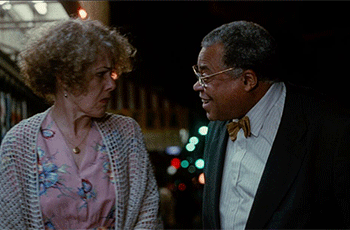Restored by The Film Foundation’s World Cinema Project and Fundación Televisa at L’Immagine Ritrovata in collaboration with Filmoteca UNAM and in association with Televisa S. de R.L. de C.V. Funding provided by the Golden Globe Foundation. Special thanks to Guillermo del Toro.

The World Cinema Project (WCP) preserves and restores neglected films from around the world. To date, 64 films from Africa, Asia, Eastern Europe, Central America, South America, and the Middle East have been restored, preserved and exhibited for a global audience. The WCP also supports educational programs, including Restoration Film Schools; intensive, results-oriented workshops allowing students and professionals worldwide to learn the art and science of film restoration and preservation. All WCP titles are available for exhibition rental by clicking "Book This Film."

IFE / 3ÈME FESTIVAL DES ARTS
Director: Paulin Soumanou Vieyra
COUNTRY OF PRODUCTION: Senegal
LANGUAGE: French with English subtitles
COLOR INFO: Black and White
RUNNING TIME: 13 minutes
Restored by The Film Foundation’s World Cinema Project and Cineteca di Bologna at L’Immagine Ritrovata laboratory, in collaboration with the Ministère de la Culture et du Patrimoine Historique de Sénégal – Direction du Cinéma. Restoration funded by the Hobson/Lucas Family Foundation.
This restoration is part of the African Film Heritage Project, an initiative created by The Film Foundation's World Cinema Project, the Pan African Federation of Filmmakers and UNESCO―in collaboration with Cineteca di Bologna―to help locate, restore, and disseminate African cinema.
NOTES ON THE RESTORATION:
The 4K restoration was completed using a 16mm print preserved by the Direction du Cinéma in Senegal. With special thanks to Tiziana Manfredi and Marco Lena.

LE SÉNÉGAL ET LE FESTIVAL MONDIAL DES ARTS NÈGRES
Director: Paulin Soumanou Vieyra
COUNTRY OF PRODUCTION: Senegal
LANGUAGE: French with English subtitles
COLOR INFO: Black and White
RUNNING TIME: 28 minutes
Restored by The Film Foundation’s World Cinema Project and Cineteca di Bologna at L’Immagine Ritrovata laboratory, in collaboration with the Ministère de la Culture et du Patrimoine Historique de Sénégal – Direction du Cinéma. Restoration funded by the Hobson/Lucas Family Foundation.
This restoration is part of the African Film Heritage Project, an initiative created by The Film Foundation's World Cinema Project, the Pan African Federation of Filmmakers and UNESCO―in collaboration with Cineteca di Bologna―to help locate, restore, and disseminate African cinema.
NOTES ON THE RESTORATION:
The 4K restoration was completed using a 16mm print preserved by the Direction du Cinéma in Senegal. With special thanks to Tiziana Manfredi and Marco Lena.
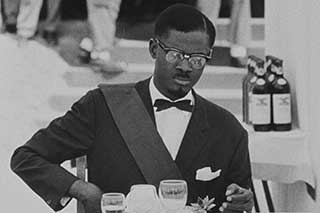
LUMUMBA, DEATH OF A PROPHET
LUMUMBA, LA MORT DU PROPHÈTE
Director: Raoul Peck
WRITTEN BY: Raoul Peck
COUNTRY OF PRODUCTION: France
LANGUAGE: French with English subtitles
COLOR INFO: Color/Black and White
RUNNING TIME: 69 minutes
PRODUCTION COMPANY: Velvet Film
Restored by The Film Foundation’s World Cinema Project and Cineteca di Bologna at L’Immagine Ritrovata/L’Image Retrouvée in collaboration with Velvet Film and supervised by Raoul Peck.
Funding provided by the Hobson/Lucas Family Foundation.
This restoration is part of the African Film Heritage Project, an initiative created by The Film Foundation’s World Cinema Project, the Pan African Federation of Filmmakers and UNESCO – in collaboration with Cineteca di Bologna – to help locate, restore, and disseminate African cinema.
NOTES ON THE RESTORATION:
LUMUMBA, DEATH OF A PROPHET was restored in 4K using the original 16mm camera and sound negatives.
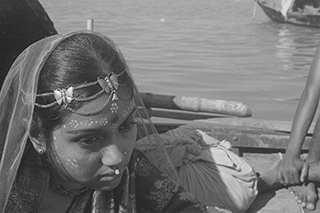
River Called Titas, A
TITAS EKTI NADIR NAAM
Director: Ritwik Ghatak
WRITTEN BY: Advaita Malla Burman, Ritwik Ghatak
EDITING: Basheer Hussain
DIRECTOR OF PHOTOGRAPHY: Baby Islam
PRODUCER: Habibur Rahman Khan
MUSICAL DIRECTOR: Ustad Bahadur Khan
STARRING: Kabari Choudhury (Rajar Jhi), Roushan Jamil (Mother), Probir Mitra (Kishore), Ritwik Ghatak (Tilakchand), Rani Sarkar (Mungli), Sufia Rustam (Udaytara), Rosi Smad (Basanti)
COUNTRY OF PRODUCTION: India
LANGUAGE: Bengali with French/English subtitles
COLOR INFO: Black and White
RUNNING TIME: 158 minutes
ON COMPANY: Ribatan Ghatak/Ritwik Memorial Trust; National Film Archive of India; Bundesarchiv-Filmarchiv
PRODUCER: Habibur Rahman Khan
Restored in 2010 by Cineteca di Bologna /L’Immagine Ritrovata laboratory, in association with Ritwik Memorial Trust, the National Film Archive of India, and The Film Foundation’s World Cinema Project. Additional film elements provided by the Bundesarchiv-Filmarchiv. Restoration funded by Doha Film Institute.
If you were eighteen years old, growing up in New Delhi, a student of cinema, a cinephile or a plain film snob, it was given that you would swoon over the film-maker Ritwik Ghatak and spend endless hours in the Delhi University canteen discussing his films, his alcoholism, and his eventual death from Tuberculosis. An ‘avant garde’ Writer and Director, Ghatak had caught the imagination of many of us who carried Mao’s Red Book’ and quoted liberally from it (in English) at the drop of a hat. After all, didn’t Ghatak (a card carrying Communist) film the extreme poverty and the cultural extinction of Bengal by Imperialism? Because of the political ‘din’ surrounding much of Ghatak’s work, ironically the work itself, as opposed to the man’s personality and politics, got neglected by the legion of his die-hard fans (me included!). It was only years later when I saw his epic, A River Called Titas, that I swooned for totally different reasons. The film is a work of pure genius. A passionate elegy for a dying culture, it moved me profoundly, and continues to haunt me to this day. Based on a novel by the Bengali author Advaita Barman and adapted for the screen by Ghatak, A River Called Titas, tells the raw and powerful story of a dying river and a dying culture.
–Deepa Mehta, May 2010
NOTES ON THE RESTORATION:
The restoration of A River called Titas used the camera and sound negatives and a positive print provided by the Ritwik Memorial Trust and held at the National Film Archive of India. As the original negative is incomplete and some reels were severely damaged, a combined lavender and a positive print provided by the Bundesarchiv-Filmarchiv were also used. The digital restoration produced a new 35 mm internegative.
Image: © Courtesy of Ritaban Ghatak - Ritwik Memorial Trust
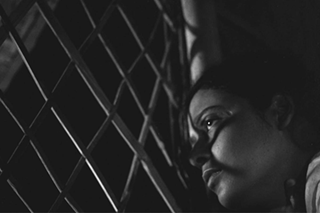
CLOUD-CAPPED STAR, THE
MEGHE DHAKA TARA
Director: Ritwik Ghatak
WRITTEN BY: Ritwik Ghatak
EDITING: Ramesh Joshi
DIRECTOR OF PHOTOGRAPHY: Dinen Gupta
PRODUCER: Ritwik Ghatak
ART DIRECTOR: Ravi Chatterjee
STARRING: Supriya Choudhury, Anil Chatterjee, Bijon Bhattacharya, Gita De, Gita Ghatak, Dwiju Bhawal, Niranjan Roy
COUNTRY OF PRODUCTION: India
LANGUAGE: Bengali
COLOR INFO: Black and White
RUNNING TIME: 127 minutes
PRODUCER: Ritwik Ghatak
Restored by the Criterion Collection in cooperation with The Film Foundation’s World Cinema Project and the Cineteca di Bologna.
NOTES ON THE RESTORATION:
A new digital transfer was created from the 35 mm original camera negative, preserved at the National Film Archive of India in Pune. This element includes several shots inserted from a duplicate negative. A 35 mm print from the Library of Congress was used for sections of the film where the original camera negative was damaged or incomplete.
The original monaural soundtrack was remastered from the Library of Congress’s print and a digital source from the British Film Institute

MACARIO
Director: Roberto Gavaldón
EDITING: Gloria Schoemann
DIRECTOR OF PHOTOGRAPHY: Gabriel Figueroa
ADAPTED BY: Emilio Carballido, Roberto Gavaldón
MUSICAL DIRECTOR: Raúl Lavista
STARRING: Ignacio López Tarso, Pina Pellicer, Enrique Lucero, José Gálvez, José Luis Jiménez, Mario Alberto Rodríguez, Consuelo Frank
COUNTRY OF PRODUCTION: Mexico
LANGUAGE: Spanish with English subtitles
COLOR INFO: B&W
RUNNING TIME: 91 minutes
NOTES ON THE RESTORATION:
MACARIO was restored from the original camera and sound negatives preserved at Televisa. Image scanning at 4K resolution and audio digitization work was completed by Filmoteca UNAM. Restoration of the picture and sound was carried out at L'Immagine Ritrovata in 2023.
Special thanks to Gabriel Figueroa Flores for supervising the color grading.

SAMBIZANGA
Director: Sarah Maldoror
EDITING: Georges Klotz
DIRECTOR OF PHOTOGRAPHY: Claude Agostini
STARRING: Elisa Andrade, Domingos De Oliveira, Jean M’Vondo, Adelino Nelumba, Benoît Moutsila, Tala Ngongo, Lopes Rodrigues, Henriette Meya, Manuel Videira
COUNTRY OF PRODUCTION: Angola, France
LANGUAGE: Portuguese, Lingala and Kimbundu with English subtitles
COLOR INFO: Color
RUNNING TIME: 96 minutes
Restored by The Film Foundation’s World Cinema Project and Cineteca di Bologna at L’Image Retrouvée in association with Éditions René Chateau and the family of Sarah Maldoror.
Funding provided by Hobson/Lucas Family Foundation.
This restoration is part of the African Film Heritage Project, an initiative created by The Film Foundation’s World Cinema Project, the Pan African Federation of Filmmakers and UNESCO – in collaboration with Cineteca di Bologna – to help locate, restore, and disseminate African cinema.
NOTES ON THE RESTORATION:
Restored in 4K from the original 35mm negatives. Color grading was supervised by Annouchka De Andrade and cinematographer Jean-François Robin.
With special thanks to Annouchka De Andrade and Henda Ducados.

SAYAT NOVA
COLOR OF POMEGRANATES, THE
Director: Sergei Parajanov
WRITTEN BY: Sergei Parajanov
EDITING: Maria Ponomarenko
DIRECTOR OF PHOTOGRAPHY: Suren Shakhbazian
MUSICAL DIRECTOR: Tigran Mansurian
SOUND: Yuri Sayadyan
ART DIRECTOR: Stepan Andranikian, Mikhail Arakelian
STARRING: Sofiko Chiaureli (the Poet as a youth, the Poet’s Beloved, the Nun in White Lace, the Angel of the Resurrection, the Pantomime), Melkon Alekian (the Poet as a child), Vilen Galustian (the Poet as a monk), Georgi Gegechkori (the Poet in Old Age), Hovhannes (Onik) Minsasian (the King), Spartak Bagashvili (the Poet’s father), Medea Japaridze (the Poet’s mother), Grigori Margarian (Sayat Nova’s teacher)
COUNTRY OF PRODUCTION: Armenia
LANGUAGE: Armenian
COLOR INFO: Color
RUNNING TIME: 77 minutes
Restored by Cineteca di Bologna/L’Immagine Ritrovata laboratory and The Film Foundation’s World Cinema Project, in association with the Cinema Foundation of Armenia and Gosfilmofond of Russia. Restoration funded by the Material World Foundation.
And what about the fate of the picture now? Armenia showed this film, sent people to see it. I wouldn’t say that the people understand the picture, but they go as if to a celebration. […] Every layer of society is going – they sense their genes in the picture. It wasn’t the subject, it wasn’t the established canons of the fate of the poet – conflict with the tsar, conflict at court, the banishing of the poet from the palace, wordly life, the monastery – these were not the point of my scenario, but the colors, the accessories, the details, of the daily life that accompanied the poetry. Here I was trying to portray the art in life, rather than portray life in art. The other way around, so that art is reflected in life. […] The picture is very primitive in its structure: there was childhood, there was youth, there was love, there was the monastery, there were the stones. The beloved was a stone, the cell was the beloved, the beloved, her breast is glorified in verse, the rose is glorified in verse. Then there was the thought: my throat is dry, I am ill. The poet dies. Everything is so simple, clear, as in the fate of a great poet, an ashugh, a minstrel.
- Sergei Parajanov
Watching Sergei Parajanov’s The Color of Pomegranates, or Sayat Nova, is like opening a door and walking into another dimension, where time has stopped and beauty has been unleashed. On a very basic level, it’s a biography of the Armenian poet Sayat Nova, but before all else it’s a cinematic experience, and you come away remembering images, repeated expressive movements, costumes, objects, compositions, colors. Sayat Nova lived in the 18th century, but the look and movement of the film seem to have come out of the middle ages or an even earlier time: Parajanov’s cinematic tableaux feel like they’ve been carved in wood or stone, and the colors seem to have naturally materialized from the images over hundreds of years. There’s nothing else quite like this picture. For many years, it’s been a dream to see The Color of Pomegranates restored to the form originally intended by Parajanov. This restoration represents years of painstaking work by many people. As always, I would like to thank our colleagues and partners at the Cineteca di Bologna and L’Immagine Ritrovata as well as all the individuals and organizations who have supported this challenging project and dedicated an enormous amount of time and energy to preserve Parajanov’s oeuvre.
- Martin Scorsese
NOTES ON THE RESTORATION:
45 years after its Armenian release, the film is premiered at Cannes Classics in its restored version, as Parajanov originally conceived it. Both the Armenian (also known as “Parajanov’s cut”) and Russian (Sergei Yutkevic’s) versions have been preserved and restored. The restoration used the original camera negative preserved at Russia’s Gosfilmofond, as well as the 35mm dupe negative held by the National Cinema Centre of Armenia.
The original camera negative has been scanned in 4K by Gosfilmofond in Russia and restored by L’Immagine Ritrovata in Bologna. The sound restoration was made from the original magnetic track, preserved by Gosfilmofond, in addition to the Armenian reference print. A vintage print of the film, produced on Orwo stock and preserved by the Harvard Film Archive, was used as a reference for the grading phase.
The Russian version of The Color of Pomegranates has also been preserved for posterity.
Image: © Courtesy of the Parajanov Museum, Yerevan
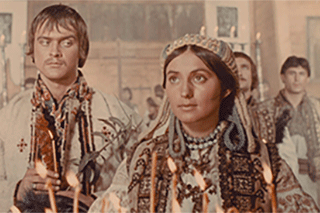
SHADOWS OF FORGOTTEN ANCESTORS
TINI ZABUTYKH PREDKIV
Director: Sergei Parajanov
WRITTEN BY: Sergei Parajanov, Ivan Chendej
EDITING: Marfa Ponomarenko
DIRECTOR OF PHOTOGRAPHY: Yuri Ilyenko
MUSICAL DIRECTOR: Miroslav Skorik
STARRING: Ivan Mikolaychuk, Larisa Kadochnikova,Tatyana Bestayeva, Spartak Bagashvili, Nikolay Grinko, Leonid Yengibarov
COUNTRY OF PRODUCTION: Ukraine
LANGUAGE: Ukrainian with English subtitles
COLOR INFO: Color
RUNNING TIME: 96 minutes
Restored by The Film Foundation’s World Cinema Project and Cineteca di Bologna at L’Immagine Ritrovata laboratory, in association with the Dovzhenko Film Studio and in collaboration with the Oleksandr Dovzhenko National Centre. Special thanks to Olena Honcharuk and Daniel Bird.
Funding provided by the Hobson/Lucas Family Foundation
NOTES ON THE RESTORATION:
SHADOWS OF FORGOTTEN ANCESTORS was scanned in 4K by Fixafilm laboratory in Warsaw using a low contrast 35mm print donated by Eric Liknaitzky to Daniel Bird and now deposited at the Austrian Film Museum. A vintage print for the Harvard Film Archive was used as a reference for grading. Restoration work was completed in 2024 by L'Immagine Ritrovata.
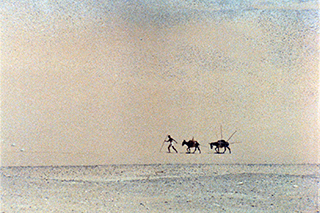
ELOQUENT PEASANT, THE
SHAKAVI EL FLASH EL FASI
Director: Shadi Abdel Salam
WRITTEN BY: Shadi Abdel Salam
EDITING: Kamal Abou El Ella
STARRING: Ahmed Marei (Peasant); Ahmed Enan (The Great Stewart); Ahmed Hegazi (Thutenakht)
COUNTRY OF PRODUCTION: Egypt
LANGUAGE: Arabic
COLOR INFO: Color
RUNNING TIME: 21 minutes
Restored in 2010 by Cineteca di Bologna/L’Immagine Ritrovata laboratory, in association with The Film Foundation’s World Cinema Project, and the Egyptian Film Center. Restoration funded by Armani, Cartier, Qatar Airways and Qatar Museum Authority.
Based on one of the major literary texts survived from the Middle Kingdom, the classical period of Egyptian literature, The Eloquent Peasant is a combination of a morality/folk tale and a poem. The events are set between 2160 and 2025 BC. When the peasant Khun-anup and his donkey stumble upon the lands of the noble Rensi, the peasant’s goods are confiscated and he’s unjustly accused of theft. The peasant petitions Rensi who is so taken by the peasant’s eloquence that he report his astonishing discovery to the king. The king realises the peasant has been wronged but delays judgement so as to he can hear more of his eloquence. The peasant makes a total of nine petitions until finally, his goods are returned.
NOTES ON THE RESTORATION:
The Eloquent Peasant has been restored using the original 35mm camera and sound negatives preserved at the Egyptian Film Center in Giza. The digital restoration produced a new 35 mm internegative. Special thanks to the Bibliotheca Alexandrina.
Image: © Courtesy of Egyptian Film Centre
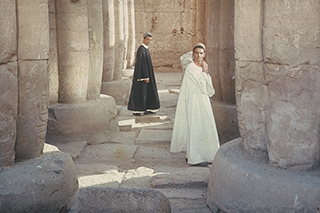
AL MOMIA
NIGHT OF COUNTING THE YEARS, THE
Director: Shadi Abdel Salam
WRITTEN BY: Shadi Abdel Salam
EDITING: Kamal Abou El Ella
DIRECTOR OF PHOTOGRAPHY: Abdel Aziz Fahmi
MUSICAL DIRECTOR: Mario Nascimbene
FROM: Egyptian Film Centre
STARRING: Ahmed Marei (Wannis), Ahmed Hegazi (Brother), Zouzou Hamdi El Hakim (Mother), Nadia Lofti (Zeena)
COUNTRY OF PRODUCTION: Egypt
LANGUAGE: Arabic with French and English subtitles
COLOR INFO: Color
RUNNING TIME: 103 minutes
PRODUCTION COMPANY: Egyptian General Cinema Organization
SET DESIGNER: Salah Marei
Restored in 2009 by Cineteca di Bologna/L’Immagine Ritrovata laboratory, in association with The Film Foundation’s World Cinema Project, and the Egyptian Film Center. Restoration funded by Armani, Cartier, Qatar Airways, Qatar Museum Authority and the Egyptian Ministry of Culture.
Momia, which is commonly and rightfully acknowledged as one of the greatest Egyptian films ever made, is based on a true story: in 1881, precious objects from the Tanite dynasty started turning up for sale, and it was discovered that the Horabat tribe had been secretly raiding the tombs of the Pharaohs in Thebes. A rich theme, and an astonishing piece of cinema. The picture was extremely difficult to see from the 70s onward. I managed to screen a 16mm print which, like all the prints I’ve seen since, had gone magenta. Yet I still found it an entrancing and oddly moving experience, as did many others. I remember that Michael Powell was a great admirer. Momia has an extremely unusual tone – stately, poetic, with a powerful grasp of time and the sadness it carries. The carefully measured pace, the almost ceremonial movement of the camera, the desolate settings, the classical Arabic spoken on the soundtrack, the unsettling score by the great Italian composer Mario Nascimbene – they all work in perfect harmony and contribute to the feeling of fateful inevitability. Past and present, desecration and veneration, the urge to conquer death and the acceptance that we, and all we know, will turn to dust… a seemingly massive theme that the director, Shadi Abdel Salam, somehow manages to address, even emobody with his images. Are we obliged to plunder our heritage and everything our ancestors have held sacred in order to sustain ourselves for the present and the future? What exactly is our debt to the past? The picture has a sense of history like no other, and it’s not at all surprising that Roberto Rossellini agreed to lend his name to the project after reading the script. And in the end, the film is strangely, even hauntingly consoling – the eternal burial, the final understanding of who and what we are… am very excited that Shadi Abdel Salam’s masterpiece has been restored to original splendor.
–Martin Scorsese, May 2009
NOTES ON THE RESTORATION:
The restoration of Al Momia used the original 35mm camera and sound negatives preserved at the Egyptian Film Center in Giza. The digital restoration produced a new 35mm internegative. The film was restored with the support the Egyptian Ministry of Culture.
Image: © Courtesy of Egyptian Film Centre

DUPES, THE
AL-MAKHDU’UN
Director: Tewfik Saleh
WRITTEN BY: Tewfik Saleh
EDITING: Farin Dib, Saheb Haddad
DIRECTOR OF PHOTOGRAPHY: Bahgat Heidar
STARRING: Mohamed Kheir-Halouani, Abderrahman Alrahy, Bassan Lofti Abou-Ghazala, Saleh Kholoki, Thanaa Debsi
COUNTRY OF PRODUCTION: Syria
LANGUAGE: Arabic with English subtitles
RUNNING TIME: 107 minutes
Restored in 2023 by The Film Foundation’s World Cinema Project and Cineteca di Bologna in collaboration with the National Film Organization and the family of Tewfik Saleh. Special thanks to Mohamed Challouf and Nadi Nekol Nas. Funding provided by the Hobson/Lucas Family Foundation.
NOTES ON THE RESTORATION:
The 4K restoration used a 35mm dupe negative preserved by the Bulgarian National Film Archive (Bulgarska Nacionalna Filmoteka) and was completed in 2023 by L’Immagine Ritrovata laboratory.
